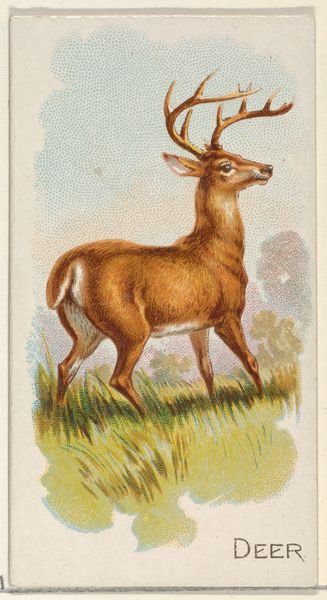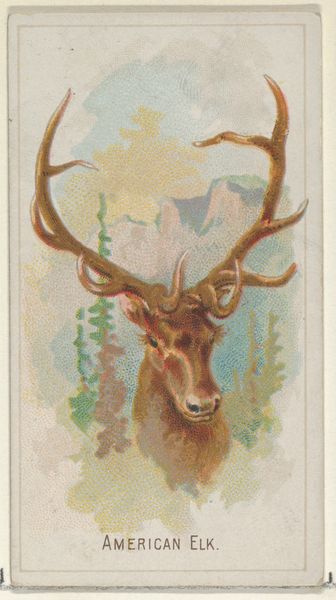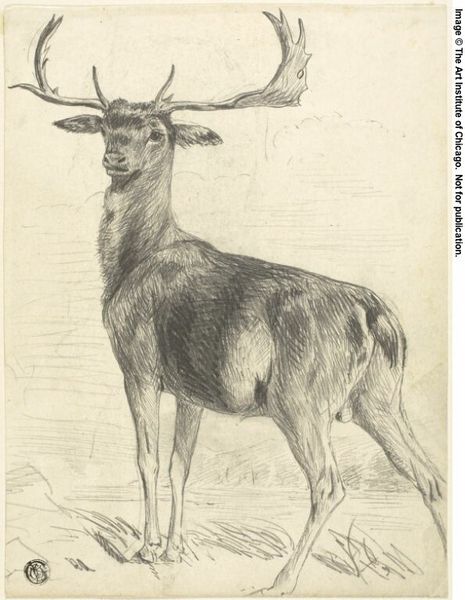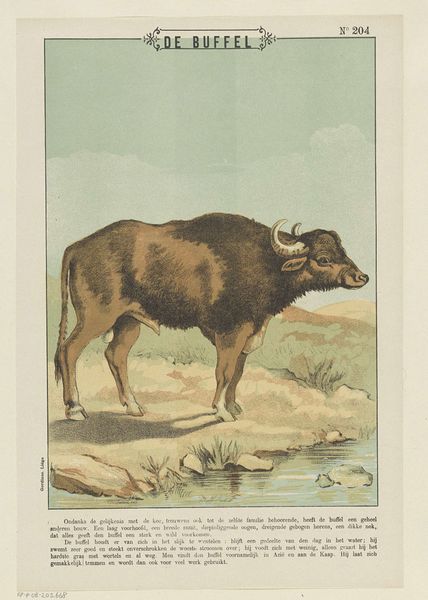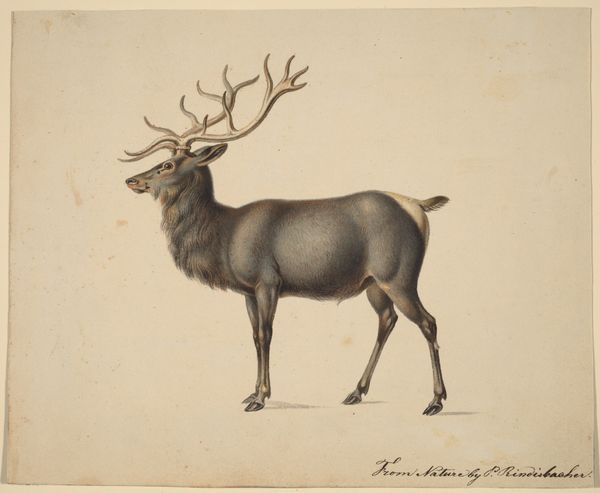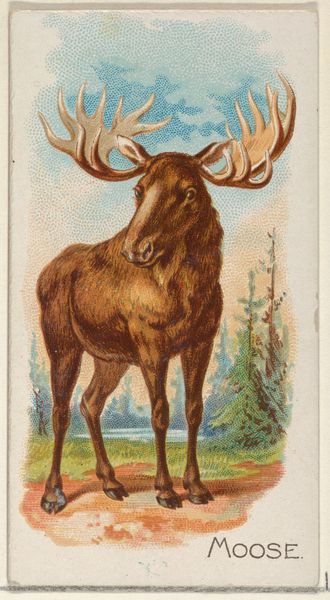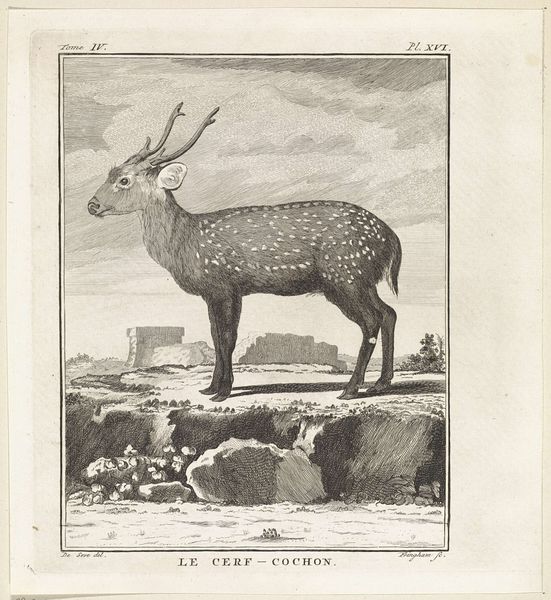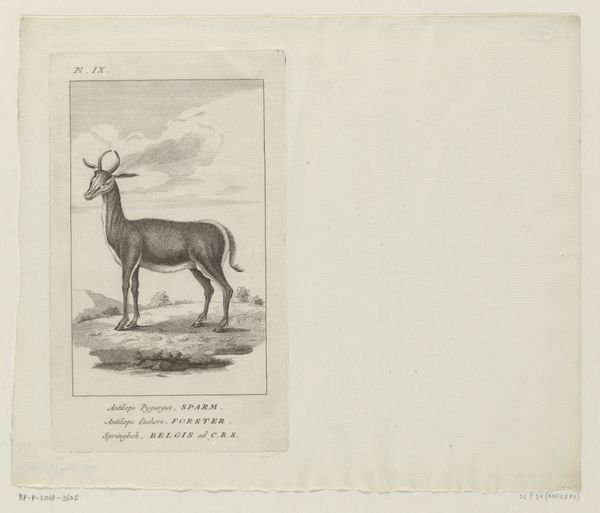
drawing, watercolor
#
drawing
#
animal
#
landscape
#
watercolor
#
watercolour illustration
#
watercolor
Dimensions: height 400 mm, width 270 mm
Copyright: Rijks Museum: Open Domain
Editor: Here we have "Het Hert," a drawing and watercolor piece housed at the Rijksmuseum, created sometime between 1894 and 1959 by Gordinne. There’s a calmness to it, a stillness in the way the deer is depicted amidst a sparse landscape. What's your take on this piece? Curator: It’s interesting you mention stillness. Historically, images like these, especially those circulated as prints, played a complex role. Think about the context: growing urbanization and industrialization. Pictures of nature, like this serene deer, became increasingly appealing. It's a reminder of an idealized, perhaps even fabricated, rural past. Notice how it seems posed rather than caught in its natural habitat. Does that strike you as unusual? Editor: Yes, now that you point it out. It’s very staged. Was it also about demonstrating a certain power dynamic, the “us” viewing “them”? Curator: Precisely. These depictions often reflect a specific socio-political viewpoint. The very act of depicting nature, framing it in art, suggests a kind of ownership or control. This imagery implicitly endorsed an increasingly human-centered world. Did this image make you think about ideas of natural history or even environmental concerns? Editor: Initially, no, not at all. I was only thinking about this deer. Now, though, I see how this relates to how people at the time were thinking about our place in nature. Curator: Exactly! And these apparently simple images were actually reinforcing powerful ideologies, helping to shape our relationship with the environment. What do you think we can learn from recognizing these power dynamics embedded within seemingly idyllic scenes?
Comments
No comments
Be the first to comment and join the conversation on the ultimate creative platform.
